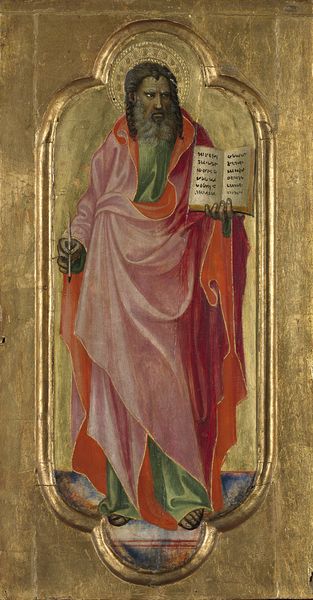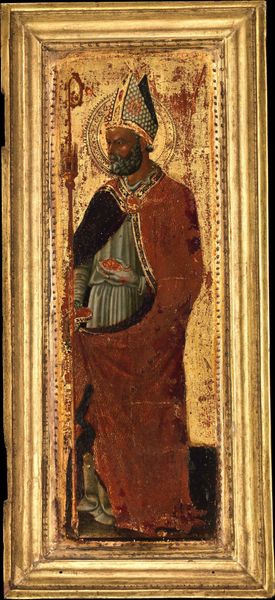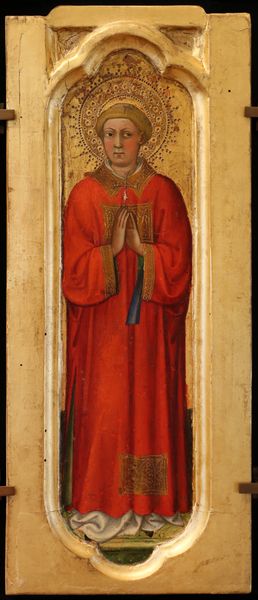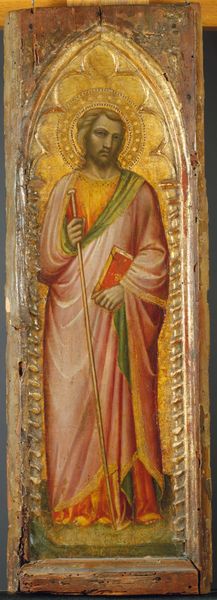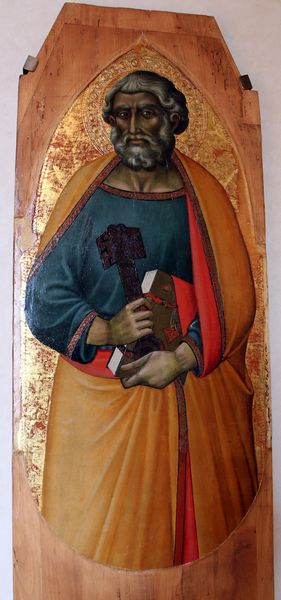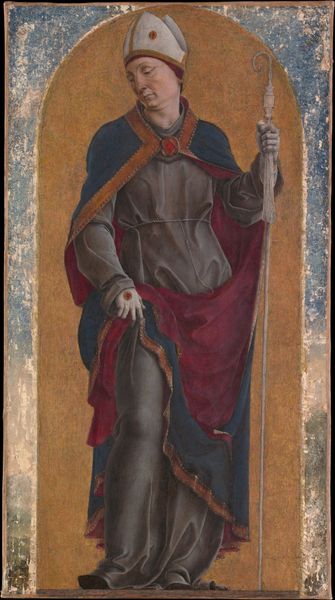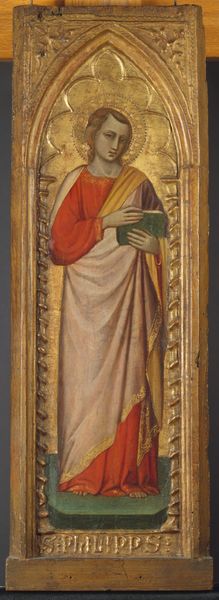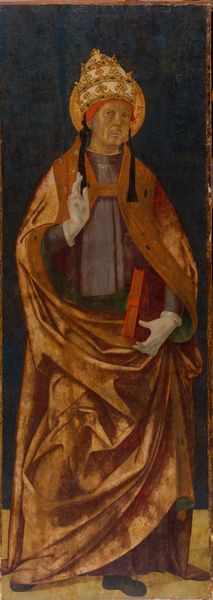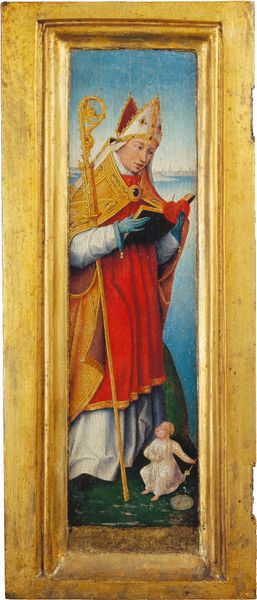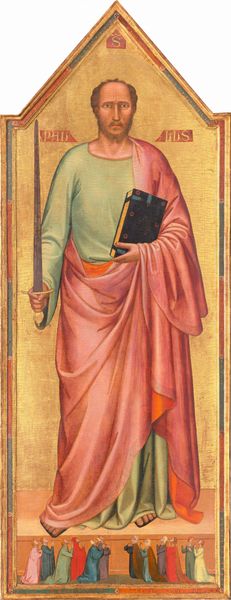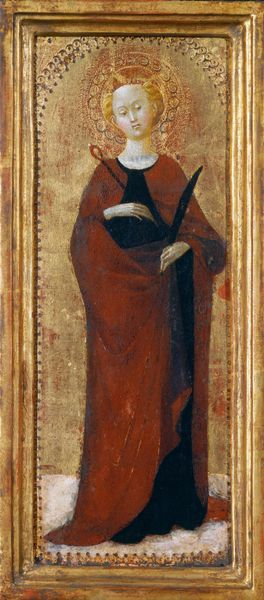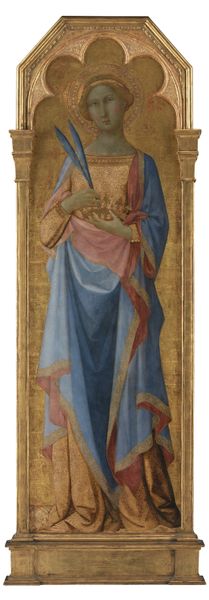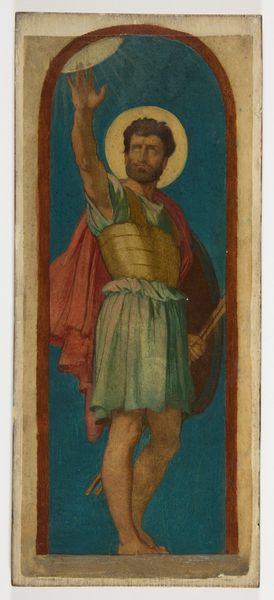
panel, tempera, painting, wood
#
portrait
#
medieval
#
panel
#
tempera
#
painting
#
sculpture
#
figuration
#
wood
#
history-painting
#
italian-renaissance
Dimensions: 158 cm (height) x 47.5 cm (width) (Netto), 180.3 cm (height) x 63.3 cm (width) x 9.5 cm (depth) (Brutto)
Editor: Here we have "St Victor of Siena," a tempera on wood panel by the Master of the Palazzo Venezia Madonna, created sometime between 1348 and 1352. The figure feels quite stoic. I'm struck by the very tangible materiality of the panel itself. What do you see when you look at this piece? Curator: For me, the value lies in understanding the artist's process, specifically with tempera. How did they source the pigments? The labor involved in grinding and mixing, layer upon layer? This wasn't some spontaneous burst of inspiration, but a deliberate construction involving specific, valuable materials, think about the international trade networks that could have provided the gold. It begs the question: How does this object participate in a larger economic and social framework? Editor: So, the gold, the pigments, even the wood panel itself, tell a story of trade and access. That's fascinating. Do you think that focus diminishes the spiritual significance, or enhances it? Curator: I argue that the two are inseparable. The act of creating, especially devotional objects, was a deeply embedded process. Consider, for example, how the patronage system impacted what art was created. We cannot just look at the image as it appears without thinking of who was employing the artist to produce the work, as it will give us better understanding of the artist's constraints. Editor: That makes so much sense. Viewing it in that light, understanding the inputs, transforms my perception entirely. Thank you for shifting my perspective. Curator: Indeed. Examining the work as a product of labour and resources allows us to grasp its complete historical and social meaning.
Comments
statensmuseumforkunst almost 2 years ago
⋮
Legend says that in a vision the 16-year old St. Corona saw an angel descend from the heavens bearing two crowns: a modest one for herself and a more precious version for St. Vittorio, with whom she was to suffer martyrdom for her Christian faith.The depiction of the two saintsThe Master of the Palazzo Venezia Madonna depicted her wearing the small crown while elegantly supporting the large crown with the fingertips of her left hand. Like St. Vittorio, she carries a pair of palm branches - the trophy of martyrdom - in her right hand. St. Vittorio also holds an olive branch, the symbol of Siena’s victory over Montepulciano and Orvieto in 1229 on what was later called St. Vittorio’s Day.Examples of Siena GothicThe panels were originally side panels flanking a main panel depicting the adoration of the shepherds painted by Bartolomeo Bulgarini (1300/1310-1378). They are very rare and fine examples of Siena Gothic with its unique linear and colourful decorative style; a contrast to the rival Florentine school which puts greater emphasis on mass and gravity.A grandiose decoration projectThe altarpiece was created in or immediately after the plague year of 1348, which severely decimated the population of Siena. The St. Vittorio altarpiece marked the completion of a grandiose decoration project in the city’s cathedral; a project which also encompassed the altarpiece of which Ambrogio Lorenzetti’s (before 1317 - c. 1384) St. John the Baptist was part. Highlights 2005, Eva de la Fuente Pedersen.
Join the conversation
Join millions of artists and users on Artera today and experience the ultimate creative platform.
